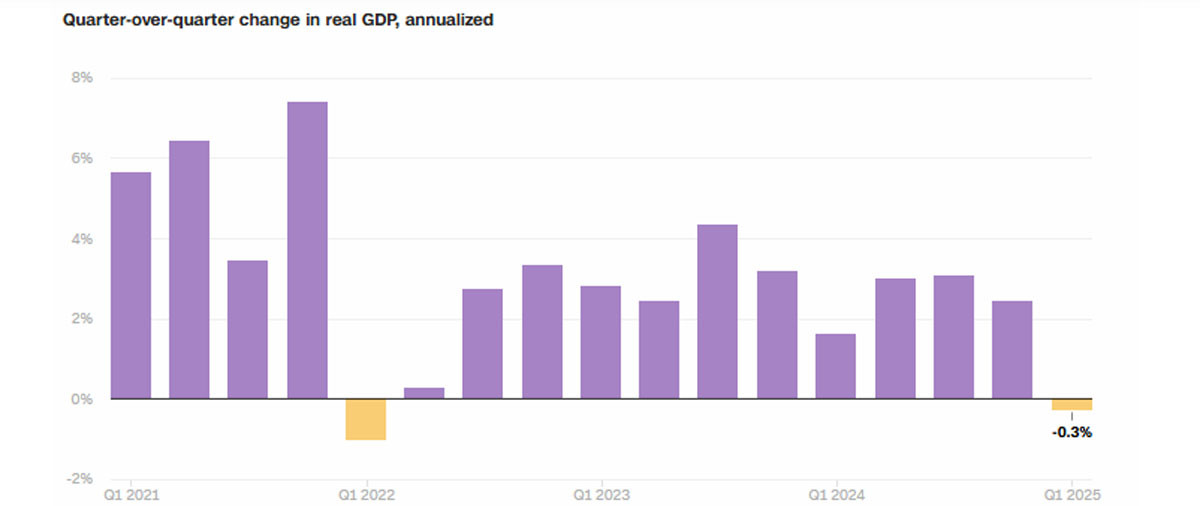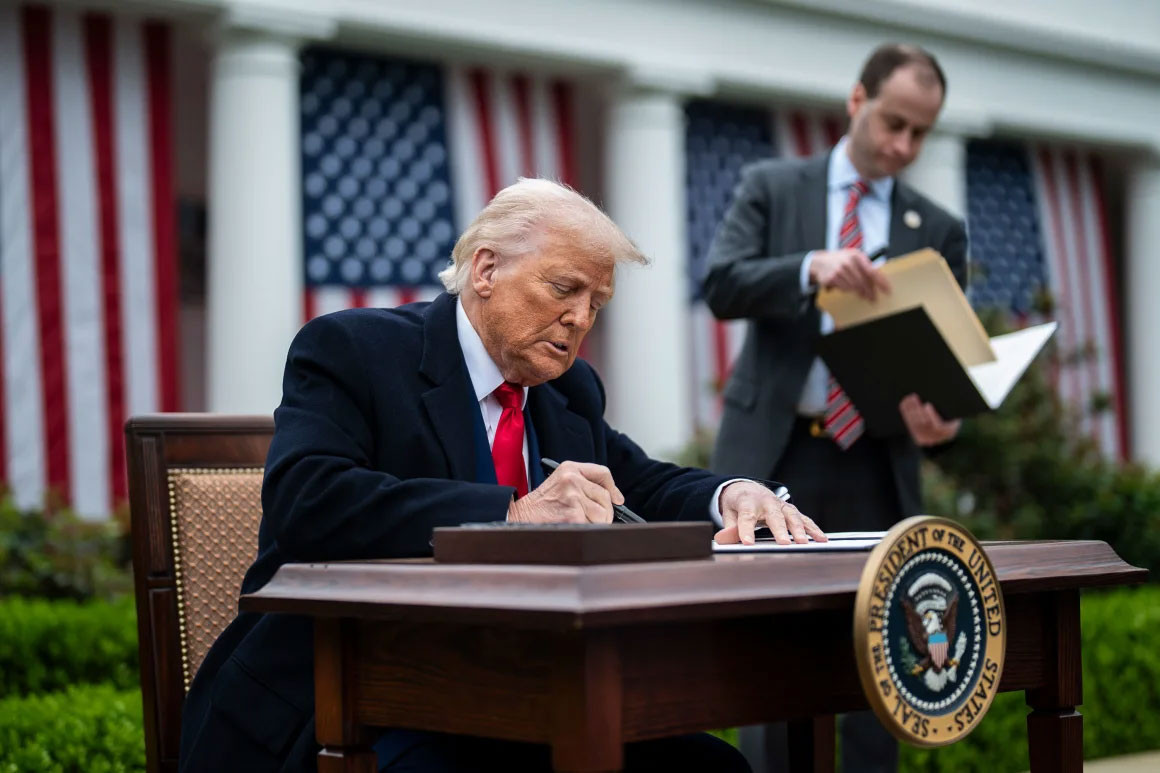The US Department of Commerce said on the evening of April 30 (Vietnam time) that the gross domestic product (GDP) in the first quarter of 2025 recorded a growth rate of -0.3%. This is a sharp decrease compared to the 2.4% increase in the fourth quarter of 2024 and much lower than the 0.8% increase predicted by economists .
The US economy contracted in the first quarter as the Trump administration imposed a series of sudden high tariffs in recent months, escalating trade tensions with China and making Americans nervous.
According to CNN, most economists believe that Mr. Trump's efforts to reshape global trade are likely to cause high inflation in the US and even cause an economic recession.
“America will grow explosively, but we must escape the potential negative impacts of the Biden era,” Donald Trump wrote in a social media post.
“The negative effects will last for a while, but it has nothing to do with tariffs, it’s just that he left us with bad numbers. But when the boom starts, it will be like nothing else. Be patient!!!”, Mr. Trump emphasized.
The US economy shrank in the quarter largely due to a widening trade deficit, as consumers rushed to avoid the high tariffs imposed by Mr Trump and as the government cut spending.

The increase in imports reversed, jumping from -1.9% in the fourth quarter of 2024 to a 41.3% increase in the first three months of the year. Meanwhile, exports recorded an increase of 1.8%.
There were some signs of weakness in the first GDP report of Mr Trump's second term, but it wasn't all doom and gloom.
While US consumer and government spending declined significantly during the period, US businesses increased spending sharply. Business investment grew at a 9.8% annual rate in the first quarter, up sharply from -3% in the fourth quarter of 2024. The personal consumption expenditure index also increased quite strongly…
Not in recession but insecure
While the latest GDP report shows the US economy is much weaker than last year, that doesn't mean Americans are in the throes of a recession.
A recession is technically defined as a broad-based contraction in the economy — including the labor market, consumer spending, industrial activity and business investment — lasting several months.
And while it may feel like a recession, polls and surveys show that the U.S. economy is still in good shape in some important ways. The unemployment rate remains relatively low, at 4.2% as of March. Businesses are continuing to invest, and consumers have not cut back on spending.

However, the US economy could quickly get worse, especially if Mr Trump ramps up tariffs.
"I don't think we can call this a recession right now, but it's a sign that we're on the edge of a cliff, and the longer the tariffs last, the higher the likelihood of a recession," Gregory Daco, chief economist at Ernst & Young, told CNN's Matt Egan.
A recently released report shows a sharp decline in hiring by US private sector businesses, which is not a positive sign for economic growth prospects.
According to a report just released by ADP, employers provided 62,000 jobs in April. This number is much lower than the 147,000 jobs in March.
“Uncertainty is the word that comes up. It can be difficult to make hiring decisions in that environment,” said ADP chief economist Nela Richardson.
The general rule of thumb for defining a recession is two consecutive quarters of negative GDP growth. That hasn't happened yet.
The last time the US economy fell into a recession was in 2020 and lasted only two months. The reason was the impact of the Covid-19 pandemic. Before that, the recession lasted from December 2007 to June 2009 and this was the most severe economic recession since the Great Depression.
In a recent CNN poll, 59% said President Donald Trump's policies have worsened the country's economic situation, and many are skeptical of the US president's tax plans.

Source: https://vietnamnet.vn/ong-trump-100-ngay-nam-quyen-kinh-te-my-dao-nguoc-vi-nhung-thay-doi-dot-ngot-2396870.html





![[Photo] Crane falls on container truck and car at traffic construction site](https://vphoto.vietnam.vn/thumb/1200x675/vietnam/resource/IMAGE/2025/5/31/a8d3ae08da324cfe8ee406174c0eacc4)




















































































Comment (0)